This is one in a series of posts on the Fujifilm GFX 100S. You should be able to find all the posts about that camera in the Category List on the right sidebar, below the Articles widget. There’s a drop-down menu there that you can use to get to all the posts in this series; just look for “GFX 100S”. Since it’s more about the lenses than the camera, I’m also tagging it with the other Fuji GFX tags.
The graphs in this post show the shift of the focal plane along the lens axis between the standard, which is the white-balanced raw signal, and the red raw channel. Negative displacement is front-focusing. Positive displacement is back-focusing. The visual effect of LoCA diminishes as the lens is stopped down because of the extra depth of focus thus obtained. That effect is ignored in these graphs.
For the red raw channel:
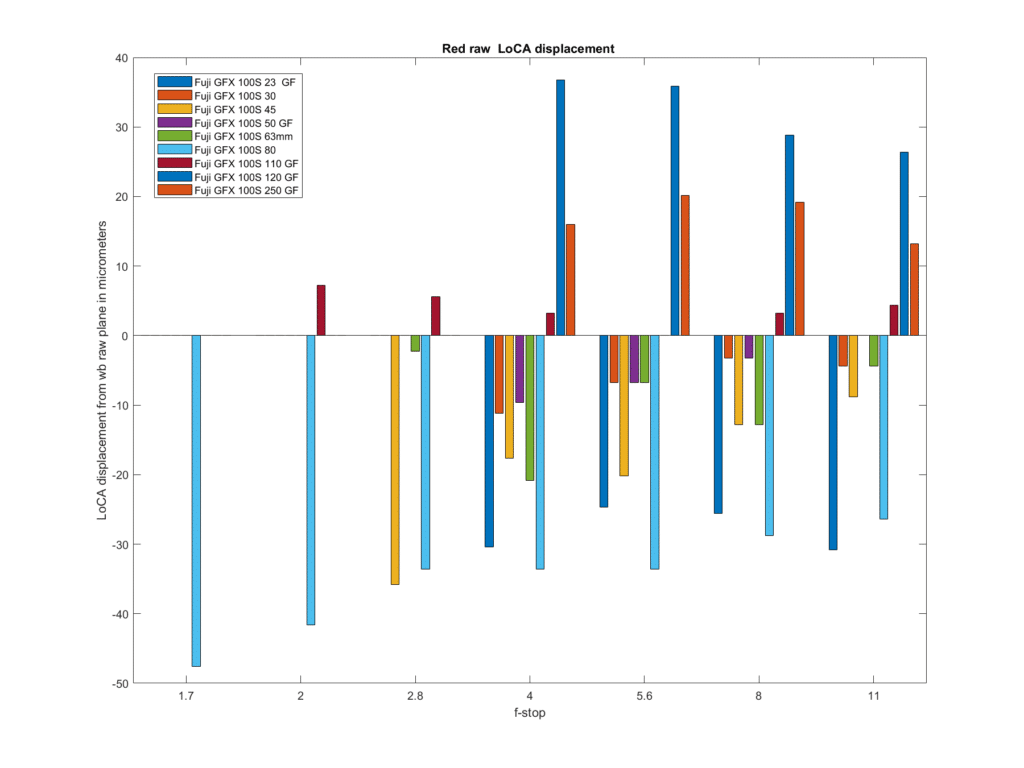
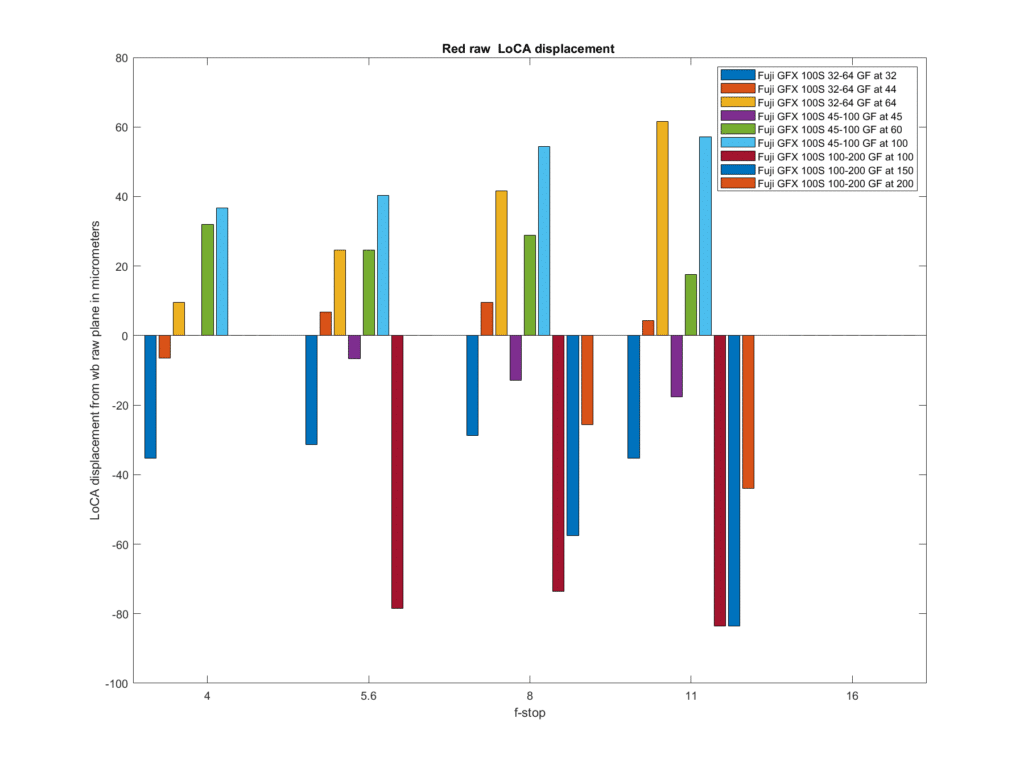
For the blue raw channel:
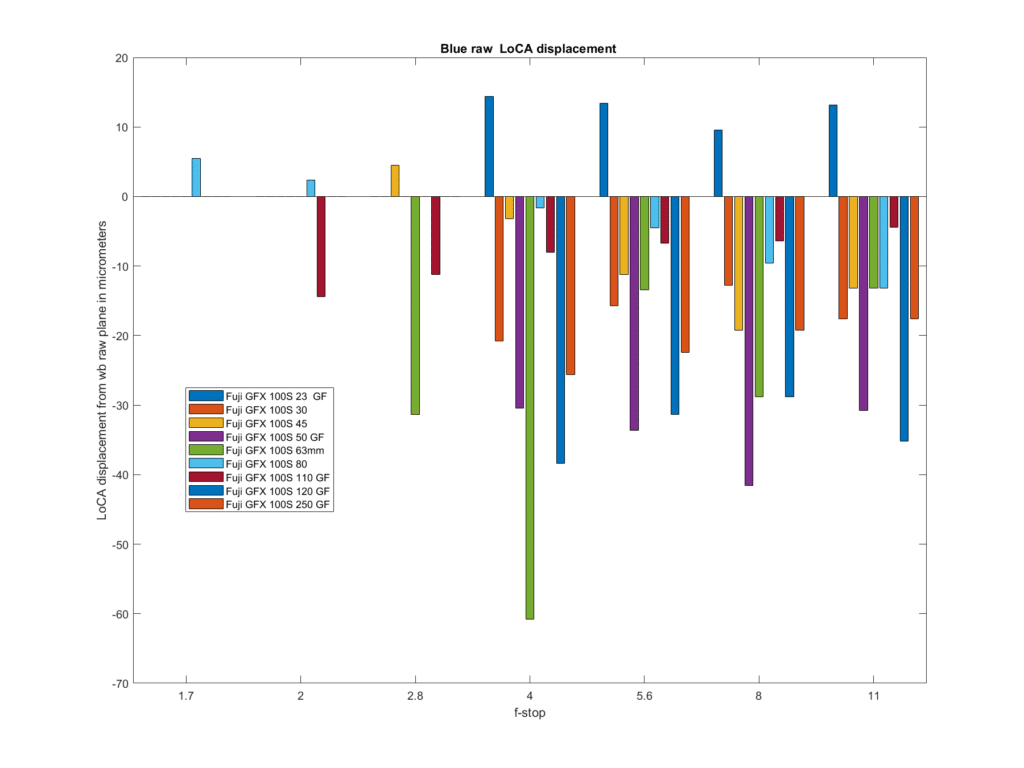
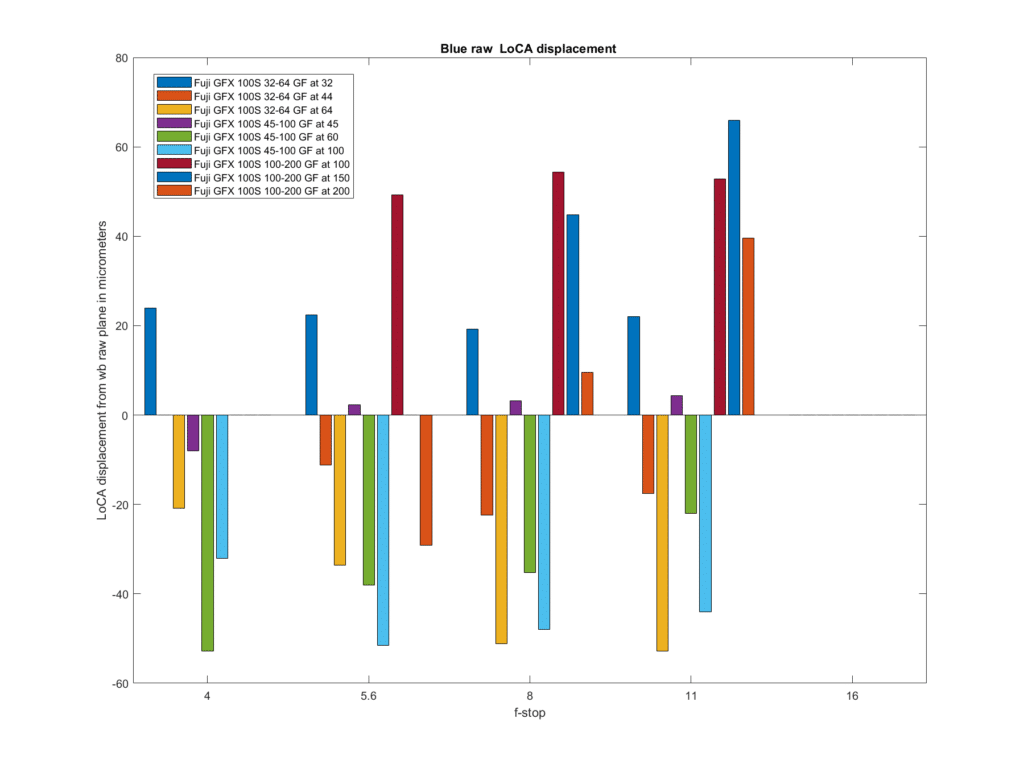
There isn’t as much displacement of the raw green channels, since they play a larger role in determining the white-balanced focal plane, but here are the graphs for the green channels:
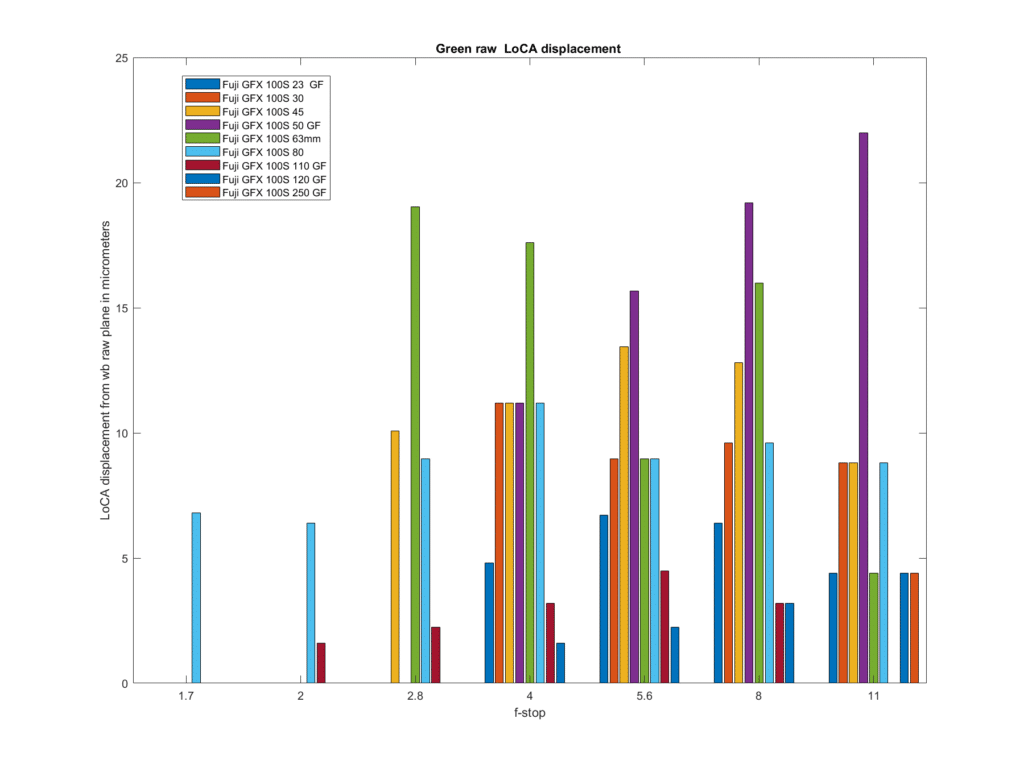
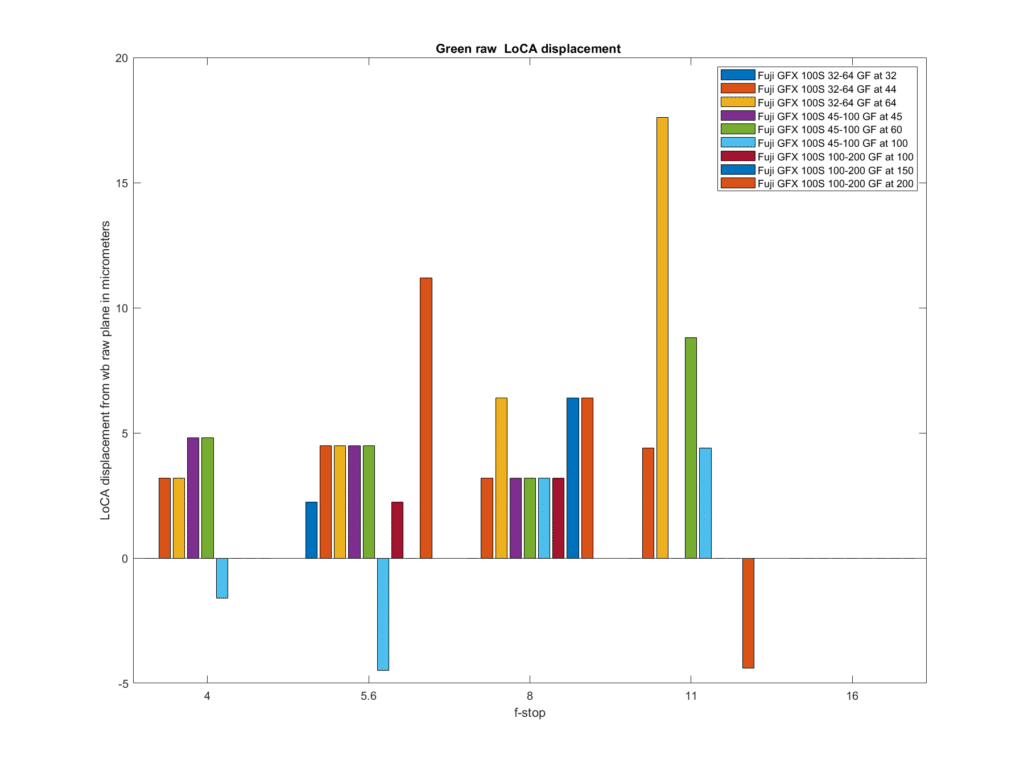
Leave a Reply